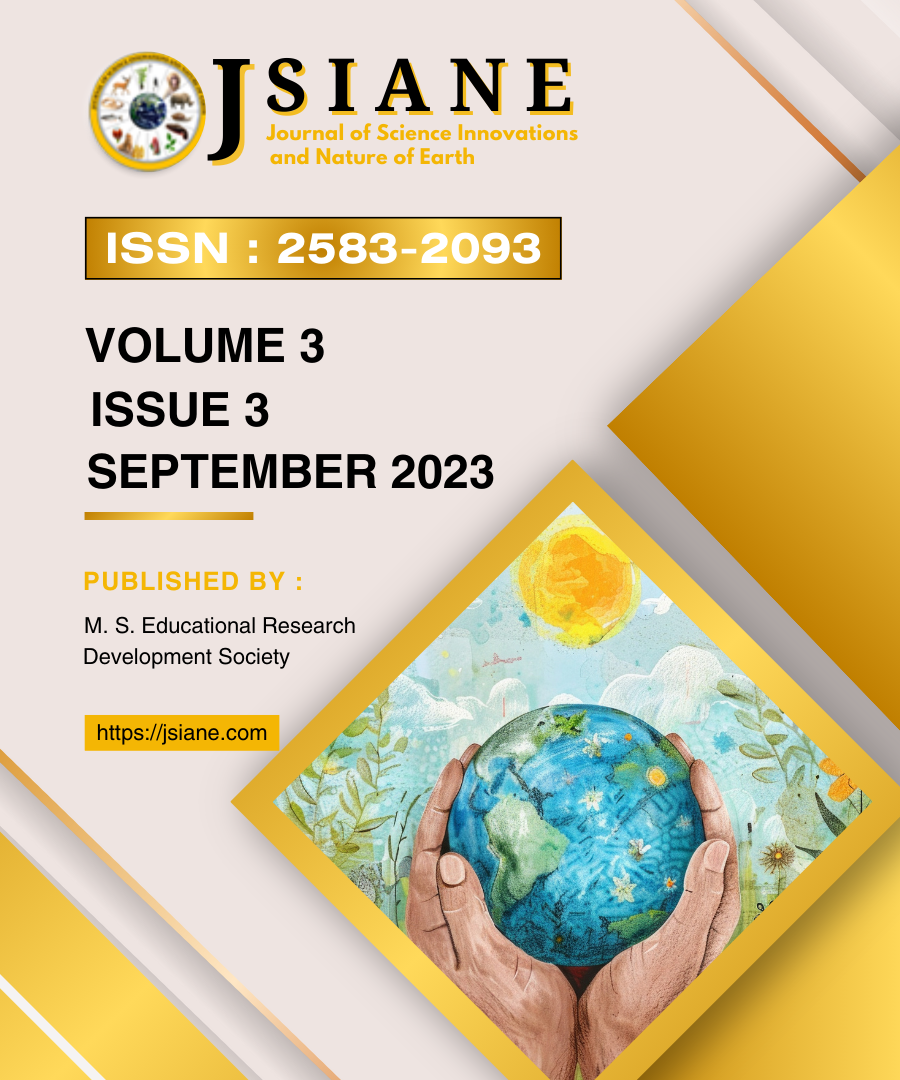ENVIRONMENTAL LAW AND THE PROVISIONS OF THE INDIAN CONSTITUTION: A LEGAL STUDY
DOI:
https://doi.org/10.59436/jsiane.com/archives3/3/91Keywords:
Constitution, Environment, Pollution and Human Rights.Abstract
The Indian Constitution is not static, but has developed and evolved over time. Environmental protection has not only become a fundamental right in India, but it has also grown linked with human rights and is now regarded an integral component of human rights. Assist everyone in living in a dignified and pollution-free environment. The preamble of our country's constitution stipulates building a socialist society and promoting environmental protection. Fundamental responsibility once again emphasizes the responsibility of all citizens to protect the environment. The principles of the guidelines are extended to the ideal of creating a healthy state. A healthy environment is an important part of a healthy situation. Article 47 states that the state shall, as part of its fundamental responsibilities, improve the food and living standards of the people and improve public health (including preventing and improving the environment). The state shall seek to conserve and improve the environment, as well as protect the country's forests and animals, according to Article 48- A of the Constitution. Part III covers fundamental rights that are important for personal development. Citizens will not participate in businesses that pose a danger to people or public health. The document explains the remedies under Articles 32 and 226 and makes the reader aware of the need to understand these provisions in order to increase public participation and raise awareness of the population about their environment.
References
Joshi, P.C. and Dr. Amit K. Pant. “Fighting Forest Fire : An Enviro-Socio-Legal Study in Kumaon Himalaya”, M.D.U., Law Journal, Vol. XII, Part-I (2007) : 165-179
Singh, Jaspal. “Legislative and Judicial Control of Environmental Pollution in India : An Appraisal”, Law Journal, Guru Nanak Dev University, Amritsar, Volume XVII (2009) : 37-54
Kumar Manoj, “Judicial Control of Environmental Pollution in India”, Chotanagpur Law Journal, 2009-10, Vol. 2, No. 2
Parmanand Katara v. Union of India. AIR 1989 SC 2039, Kharak Singh v. State of U.P. AIR 1963 SC 1295; Pashchim Bang Khet Mazdoor Samiti v. State of West Bengal AIR 1996 SC 2426; Consumer Education and Research Centre v. Union of India (1995) 3 SCC 42; Kirloskar Brothers v. Employees State Insurance Corporation (1996) 2 SCC 682; State of Punjab v. Mohinder Singh Chawla AIR 1997 SC 1225; N.D. Jayal v. Union of India, (2004) 9 SCC 362
Article 48-A and 51(A)(g) of the Constitution of India.
M.C. Mehta v. State of Orissa, AIR 1992 ORI 225.
Padam Nepal, Environmental Movements in India- Politics of Dynamism and Transformations, Ed. 1 st, Authors Press, 2009, p. 105-06
Padam Nepal, Environmental Movements in India- Politics of Dynamism and Transformations, Ed. 1st, Authors Press, 2009, p. 108.
Baliapal movement is an agitation against the establishment of the National Testing Range (NTR), India’s first missile testing project in the Balaipal and Bhograi Blocks of Orissa’s Balasore district.
Shukla V. N., Constitution of India, 12th edition, 2016.
Bansal V.K., Right to Life and Personal Liberty in India, New Delhi: Deep & Deep, (1987) : 56
The inclusion of Fundamental Duties in our Constitution brings it in line with Article 29(1) of Universal Declaration of Human Rights, which says “Everyone has the duty to the community in which alone free and full development of the personality possible”.
Article 23, World Charter for Nature, Doc.A/Res/37/7, November, 1982.
According to the Entry 13 of List-I: Participation in international conferences, associations and other bodies and implementing of decision made in the treaties.
Coastal Zone Rules be Amended Soon, Economic Times, New Delhi, 13 November, 1996.
Chipko Andolan was initiated under the leadership of Shri Sunder Lal Bahugana (a noted environmentalist) in early 1970s in protection against indiscriminate cutting of trees and deforestation.
Downloads
Published
Issue
Section
License

This work is licensed under a Creative Commons Attribution-NonCommercial 4.0 International License.










